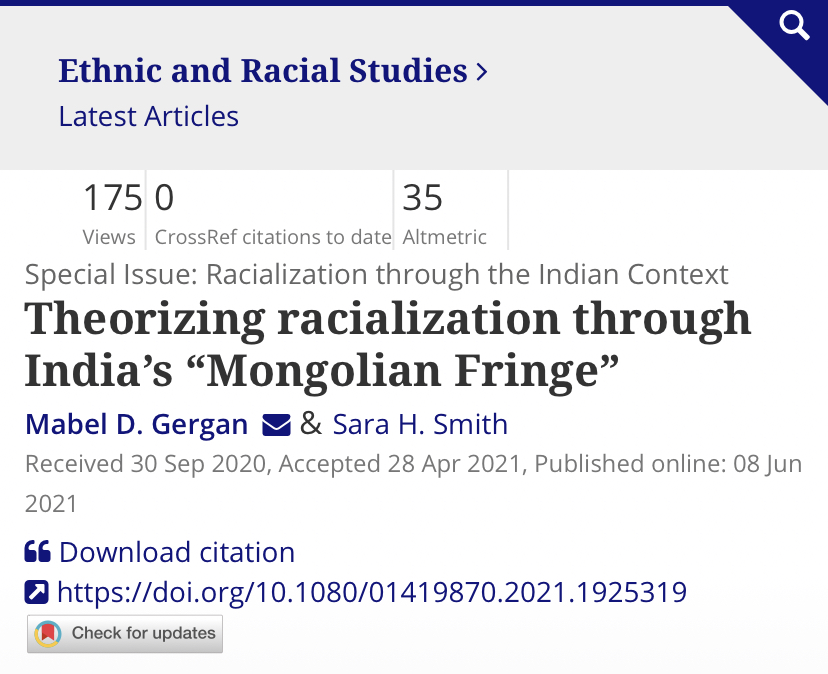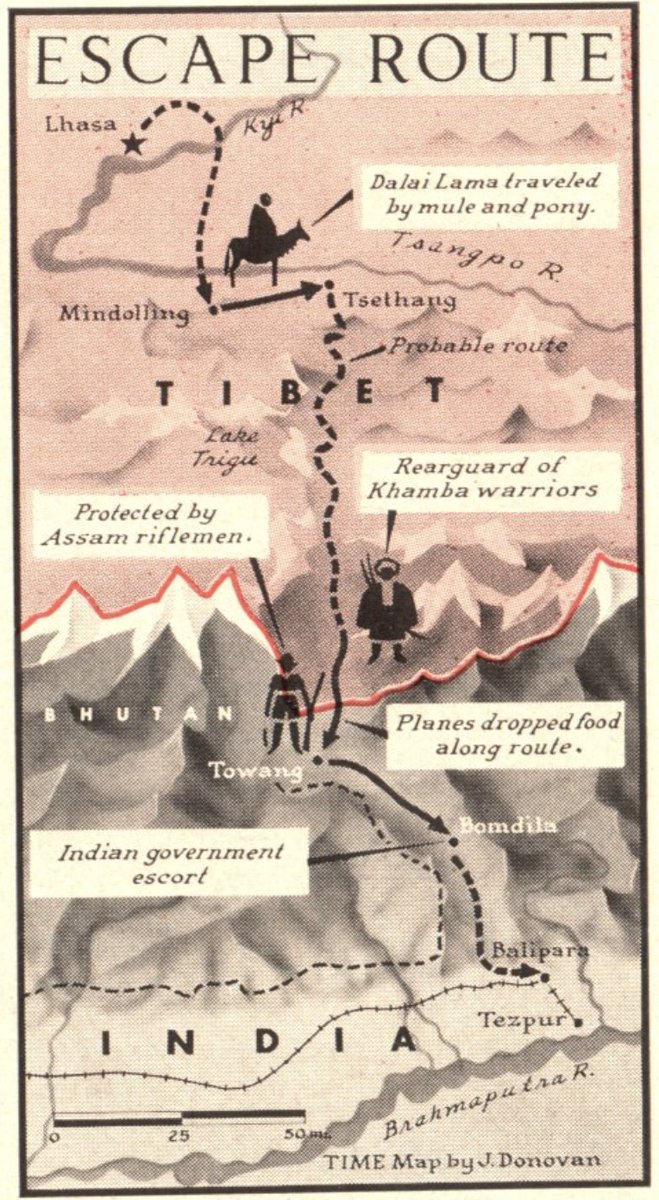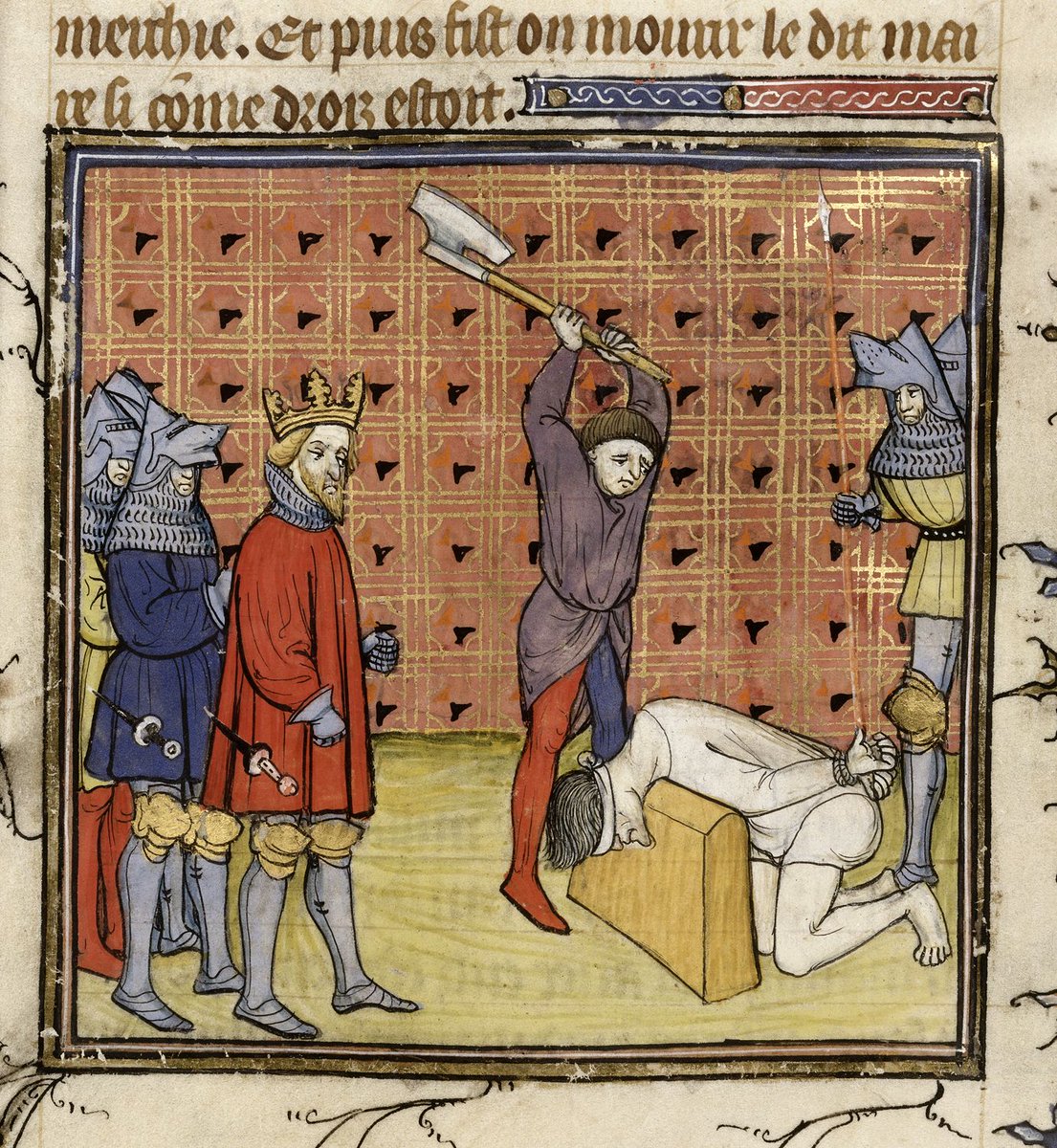
🧵Two by @ChawlaSwati
1/ On #Tibet in the Indian imagination:
Yesterday, we looked at how #Tibetans perceived India+ how the @DalaiLama walked in the path of many of his countrymen before him when he came into exile in India.
Let's turn the gaze in the other direction today.
1/ On #Tibet in the Indian imagination:
Yesterday, we looked at how #Tibetans perceived India+ how the @DalaiLama walked in the path of many of his countrymen before him when he came into exile in India.
Let's turn the gaze in the other direction today.
2/ Indians have at least two vantage points from where to view #Tibet. Parts of #Himalayan India border Tibet👇. Thanks to older connections of religious patronage, pilgrimage, and trade, the perspective from these regions is often v. diff from the capital in New Delhi.
~SC
~SC

3/ Indian cities of Gaya, Sanchi+ Sarnath were imp pilgrimage sites for Tibetan Buddhists; as was Kailash Mansarovar in Tibet for Hindu+ Buddhist pilgrims from India. The imagination of an “Akhand Bharat” (Undivided India) often included #Tibet.
Map: columbia.edu/itc/mealac/pri…
~SC
Map: columbia.edu/itc/mealac/pri…
~SC

4/ Under colonial rule, ethnographers employed phrenological+ racial taxonomies from 19th C Europe-- e.g. "Mongolian"-- to classify diverse Himalayan communities as "primitive"+ "savage" and different from the ppl of "India proper" (aka North India).
See @mgergan+ @GeogSara
~SC

See @mgergan+ @GeogSara
~SC


5/ British Foreign Secretary Olaf Caroe conceptualized the "Mongolian Fringe" in 1940 as India’s "inner ring" of defense.
This included #Nepal, #Sikkim, #Bhutan +“North East Frontier Tracts"-- all areas w/ predominantly "Mongoloid" pop"ns.
Beyond these were Tibet+ China.
~SC
This included #Nepal, #Sikkim, #Bhutan +“North East Frontier Tracts"-- all areas w/ predominantly "Mongoloid" pop"ns.
Beyond these were Tibet+ China.
~SC
6/ Echoing Charles Bell, who we met y'day 👇, Caroe wanted #Tibet "as a buffer to India on the north..." and argued that it was in India's interest to maintain Tibet as an "integral international unit."
This conceptualization has had a LONG afterlife.
~SC
This conceptualization has had a LONG afterlife.
~SC
https://twitter.com/Tweetistorian/status/1468490394438537216?s=20
7/ Echoing colonial racialized thinking in the early years after Independence, India's first Home Minister, Sardar Patel (left, below), cautioned Prime Minister #Nehru about "pro-Mongoloid prejudice" along the country's northern and eastern frontiers in a 1950 letter:
~SC
~SC

8/ "All along the #Himalaya+ north+ NE, we hv on our side of the frontier a pop"n ethnologically+ culturally not diff from #Tibetans+ Mongoloids... The existence... of a pop"n w/ affinities to Tibetans or Chinese hv all the elements of potential trouble b/w China+ ourselves.”
~SC
~SC
9/ Anxieties over India’s border security on the eastern front continued to escalate through 1950s+ 1960s. India feared that Communist control over Tibet might have a cascading effect in the region on the survival of monarchies in #Nepal, #Bhutan, and #Sikkim.
~SC
~SC
10/ Accounts of #Tibetans escaping into India fueled these fears. In 1955, Min of External Affairs heard a "rumor": the Chinese proposed to bring “500 girls trained in Communism” to #Lhasa who'll be made to marry monks+ “such monks... will be given loans to carry on trade...”
~SC
~SC
11/ The issue of the deracination of Tibetan #Buddhist monastic institutions found a sympathetic ear in Indian govt+ media. #Mahayana litr from India was catalogued+ preserved in #Tibetan+ imp Buddhist texts no longer extant in any Indian lang are available in #Tibetan.
~SC
~SC
12/ To this day, most reporting on Tibet in Indian media is from a geopolitical+ defence perspective. Among my own students over the years, I have observed that the only associations about Tibet are of the Sino-Indian relations, monks (not nuns) in red robes, + @DalaiLama.
~SC
~SC
• • •
Missing some Tweet in this thread? You can try to
force a refresh












